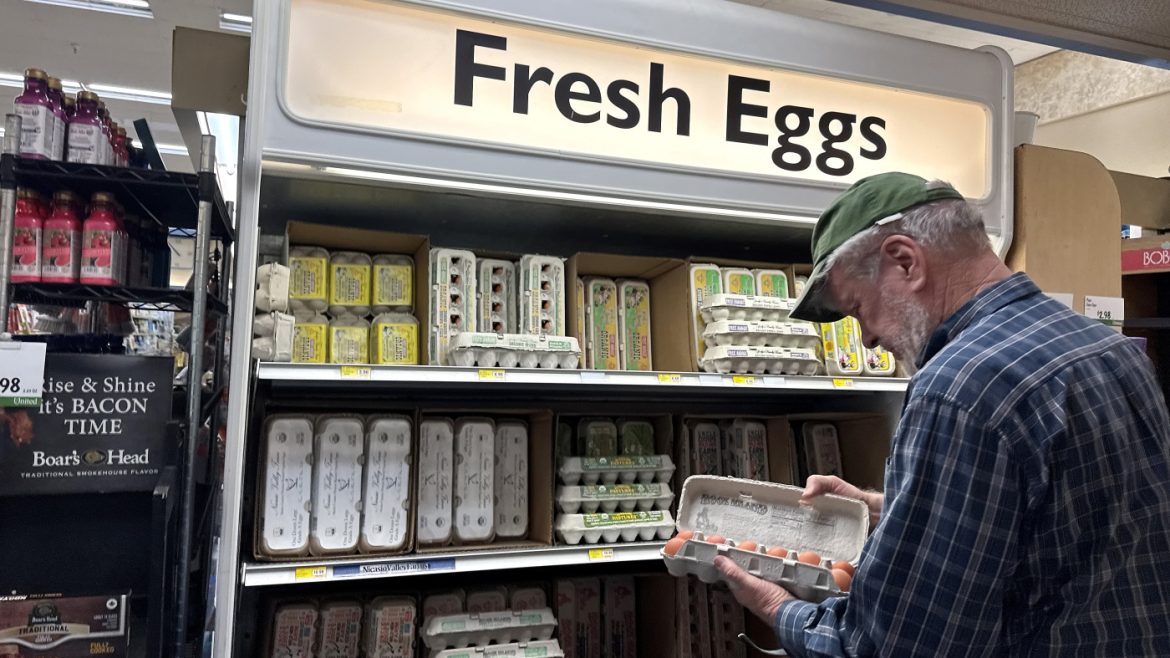The Current State of Inflation and the Looming Impact of Tariffs
The economic landscape in April presented a mixed bag of trends, with inflation showing signs of cooling but with the looming threat of tariffs potentially upending the picture. Consumer prices in April were up 2.3% from a year ago, marking the smallest annual increase in more than four years. This cooling trend was largely attributed to declines in both gasoline and grocery prices, with groceries falling by 0.4% and retail egg prices dropping by 12.7% between March and April. However, despite these declines, retail egg prices remained significantly higher than the previous year, indicating underlying inflationary pressures.
The Impact of Tariffs on Inflation
The trade war, which intensified at the beginning of April, has had a limited effect on retail prices so far. However, analysts warn that higher tariffs may become more visible in the coming months. Early indicators of this trend include a 1.5% rise in furniture costs in April. The tariffs implemented by President Trump have already sent shockwaves through the stock market, causing a significant plummet last month, although the markets have since recovered.
Economic Forecasts and Analysts’ Perspectives
Economists and analysts are divided on the future trajectory of inflation. Some view the current cooling as a temporary reprieve, while others caution that the full effects of the tariffs may manifest in the coming months. Bank of America analysts noted that tariffs were likely a modest source of inflationary pressure in April, with the potential for larger inflation prints in the future. The Federal Reserve Chair, Jerome Powell, also weighed in, stating that the Trump administration’s expansive new tariffs are likely to lead to higher inflation and slower economic growth.
Consumer Behavior and Market Reactions
Consumers are bracing for the impact of tariffs, with many stepping up their spending in anticipation of price increases. This behavior is reflected in the March consumer spending data, which showed a significant surge. However, the uncertainty surrounding tariffs and their potential impact on prices has led to a cautious outlook among many businesses and households. The stock market’s reaction to the tariffs, which initially sent it tumbling, highlights the economic uncertainty and potential for further volatility.
The Role of Housing Costs
Housing costs accounted for much of the monthly increase in prices between March and April, rising by 0.2%. This increase, coupled with the overall economic uncertainty, suggests that while inflation may have cooled temporarily, underlying pressures remain. The housing sector, which is a significant component of the Consumer Price Index (CPI), continues to be a critical factor in inflation trends.
The Broader Economic Context
The broader economic context is one of resilience and strength, as evidenced by the continued decline in energy prices and the overall stability of the economy. However, the threat of tariffs looms large, with policymakers and economists warning that the latest data is only a temporary reprieve. The Trump administration’s tariffs, which amount to an average tax increase of nearly $1,300 per US household in 2025, are expected to stoke higher inflation and potentially slow economic growth.
Conclusion: Navigating Uncertain Waters
In conclusion, while inflation has cooled in April, the economic landscape remains fraught with uncertainty. The tariffs implemented by the Trump administration pose a significant risk to future inflation trends and economic growth. Consumers, businesses, and policymakers must navigate these uncertain waters with caution, preparing for potential price increases and economic volatility. The coming months will be crucial in determining the full impact of tariffs on the economy and inflation.


